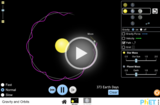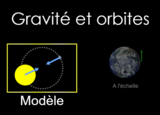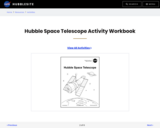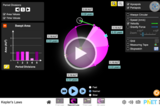
Coloring sheets provited by NASA.
- Subject:
- Astronomy
- Science
- Material Type:
- Activity/Lab
- Provider:
- NASA
- Provider Set:
- STEM Outreach
- Author:
- NASA
- National Aeronautics and Space Administration
- Date Added:
- 06/08/2023

Coloring sheets provited by NASA.

In our latest NOVA Lab, we’ve created a game that invites students to join in the fun, and trains them to use the very same techniques that scientists use every day in the hunt for exoplanets. Here’s a quick preview:
To start, players watch a brief mission intro video that sets the scene for the game: They’ve been selected to be the lead scientist for the NOVA Space Center’s Galactic Resettlement team, with the job of finding suitable exoplanets for displaced aliens desperately seeking new homes.
Once players arrive at the Lunar base, they start with a training module that explains how the search for habitable exoplanets begins in our own solar system. A series of videos and simulation tools helps them understand the conditions that make Earth so conducive to life – clues about what to look for in other, distant star systems in our Milky Way galaxy.

Coloring sheets provited by NASA.

Homepage for STEM-oriented NASA resources geared toward K-12 educators.

A game where players search images to find hidden items related to space.

Find a ton of pre-recorded virtual events from Flipgrid to use with your class.
There is something here for every age group, and every subject!
Enjoy exploring.
Find future Flipgrid events here (copy and paste into a browser) https://blog.flipgrid.com/upcomingflipgridliveevents

An activity book all about the GOES-R weather satellite.

A page of games about space from NASA.

Move the Sun, Earth, Moon and space station to see how it affects their gravitational forces and orbital paths. Visualize the sizes and distances between different heavenly bodies, and turn off gravity to see what would happen without it!

Move the sun, earth, moon and space station to see how it affects their gravitational forces and orbital paths. Visualize the sizes and distances between different heavenly bodies, and turn off gravity to see what would happen without it!

Une série de simulations provenant de l’Université de Colorado à Boulder pour les 9e – 12e au sujet des sciences.
« Déplacez le soleil, la Terre, la lune et la station spatiale pour observer comment cela affecte leurs forces gravitationnelles et leurs trajectoires orbitales. Visualisez les tailles et les distances entre différents corps célestes, et désactivez la gravité pour voir ce qui se passerait sans elle ! »

Would you like to learn how to make your own Demo-2 to launch in your home? Watch this tutorial to learn how.
All you will need is paper, markers, scissors, tape, yarn or ribbon (optional) and a straw.
How are you preparing to #LaunchAmerica? From building your own rocket to binge-watching launch videos, share a video, a photo or simply your thoughts using #LaunchAmerica for a chance to be featured on our social media platforms.
This video is available for download from NASA's Image and Video Library

A 5 page activity booklet consisting of coloring pages, connect the dots, word find, word jumble and word decoder.

Coloring sheets provited by NASA.

Create your own impact craters! When astronauts visit the Moon for the Artemis III missions, they will be able to study the craters that may contain water and ice. Testing and studying these craters may help NASA identify areas on the Moon that are rich in water and other resources to determine how to best use those materials while on the lunar surface.

An activity book all about the International Space Station

Challenge your word and math skills while you learn about the International Space Station. Download and print these crossword and emoji math puzzles. Emoji math uses icons and popular emojis in place of numbers, letters and variables in a math problem. Themed puzzles celebrate Nov. 2, 2000, as the first day of continuous habitation of humans living and working on the station.

A game where players spot the differences between two space-themed pictures

An activity book all about technology used for spaceflight.

Embark on a celestial adventure as you delve into the intricate dance of planets, explore the profound implications of Kepler's Laws, and unravel the complex relationships between velocity, position, and orbital characteristics!
• Explore how the velocity and position of a planet affect its movement and orbit.
• Discover how Kepler’s Laws apply for different bodies in the solar system
• Describe the characteristics of an ellipse that support the understanding of planets’ orbits according to Kepler’s first law
• Visualize what is meant by “swept area of a planet’s orbit” and its relationship with equal time intervals in the context of Kepler’s second Law.
• Describe the behavior of the planet's velocity in different moments of its orbit
• Explore the relationship between the semi-major axis and the period of an orbit, and their corresponding powers described by the Kepler’s third Law